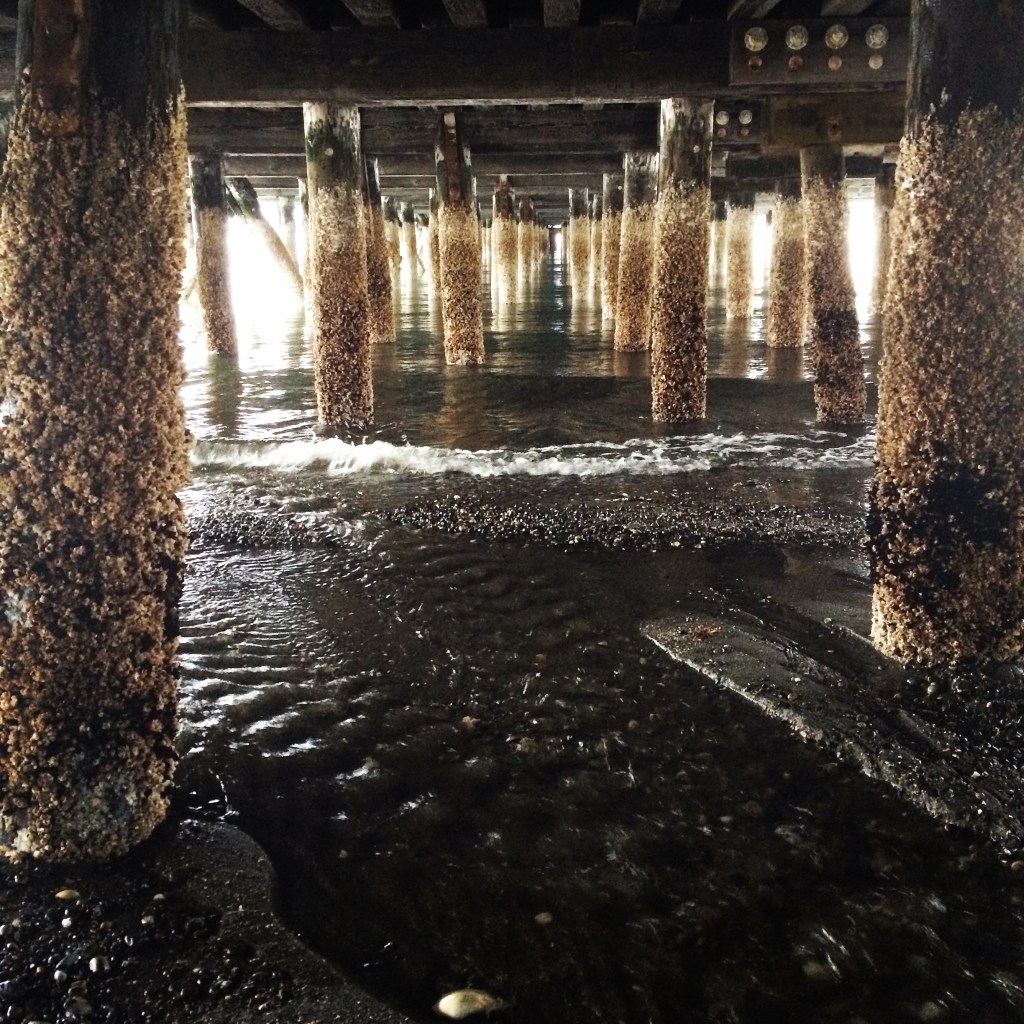When I closed my eyes, I could picture my favorite fishing hole. Crystal clear waters tumbling past broken boulders on the banks, the bending river pushing up against the far bank, rocky shelter spitting forth big trout. Tall trees swayed under blue skies, and stretches that passed without fish held eagles, deer, and other wonders of the mountains.
When I opened my eyes, my favorite fishing hole gave way to my current fishing hole. Grey skies stretched over the steely water, blending together in the mist somewhere out on horizon. The water wasn’t murky, but it wasn’t gin-clear either. It washed past my waders, then a few seconds later swept in the other direction, rebounding waves off the beach. Every 40 minutes or so, the waves ran in bigger, pulsing in from the ferry at the dock. It took some attention to avoid getting caught wading too deep and having the ferry wake spill frigid musty salt water over my waders.

Getting up to the mountains to fish in the summer isn’t too difficult, and a free morning offers plenty of options for the zen rhythm of the fly cast. With mid-winter rivers covered in snow or blown out by stormwaters, Dan and I turned our sights to the cold winter waters of Puget Sound and salt-water casting for sea-run cutthroat trout. Sea-run cutts offer a number of attractions, but chief for me is accessible winter fishing and modest amounts suffering – at least compared to the real hardcore pinnacle of flyfishing for steelhead, with snowy-banked rivers, ice-guide line guides, and frost-bitten fingers. Which is how Dan and I came to be casting less a stone’s throw from home, with kids at play shrieking on a nearby set of swings and onlookers on the ferry dock close enough to critique my cast.
It certainly didn’t start out straight forward. Our intended stream outlet ran a convoluted descent through the neighborhood before spitting out directly under the Fauntleroy ferry pier. The “approach” wasn’t far, but with the public access blocked by a construction project, it involved some technical fence-scaling and a heel-hook move that proved challenging in low-stretch waders.
The weather ran in and out as traffic noises rumbled constantly in the background. The fish never materialized, but sea birds and ducks kept me company and my cast felt good. It wasn’t perfect, but it was urban fishaineering at its finest.
